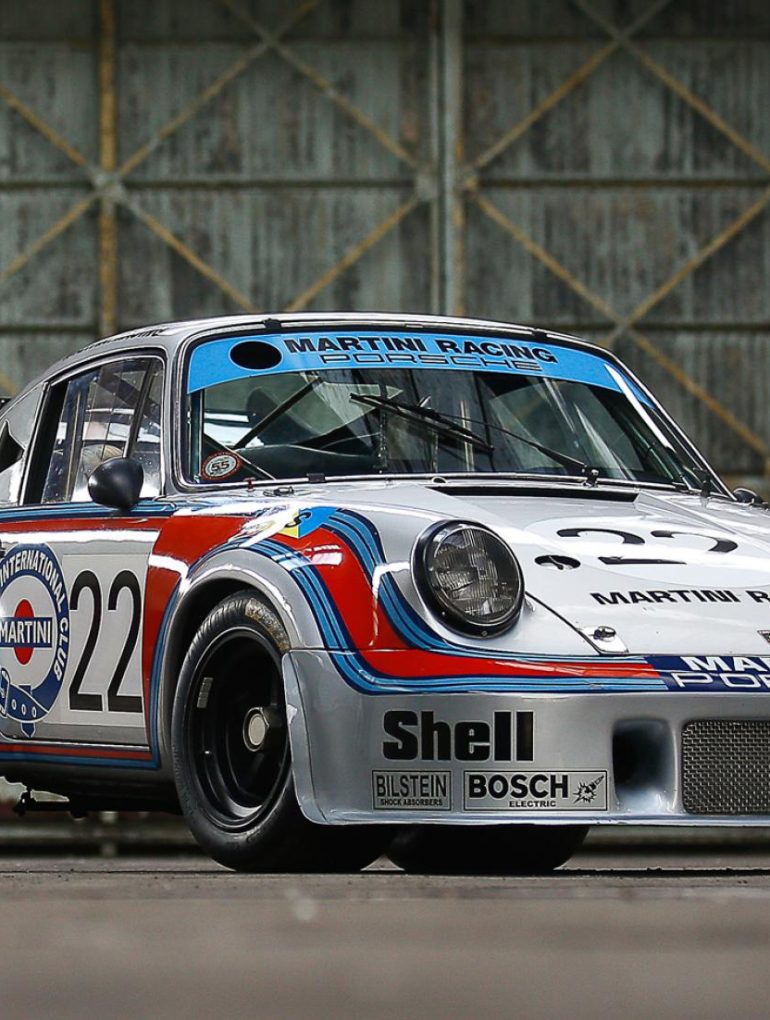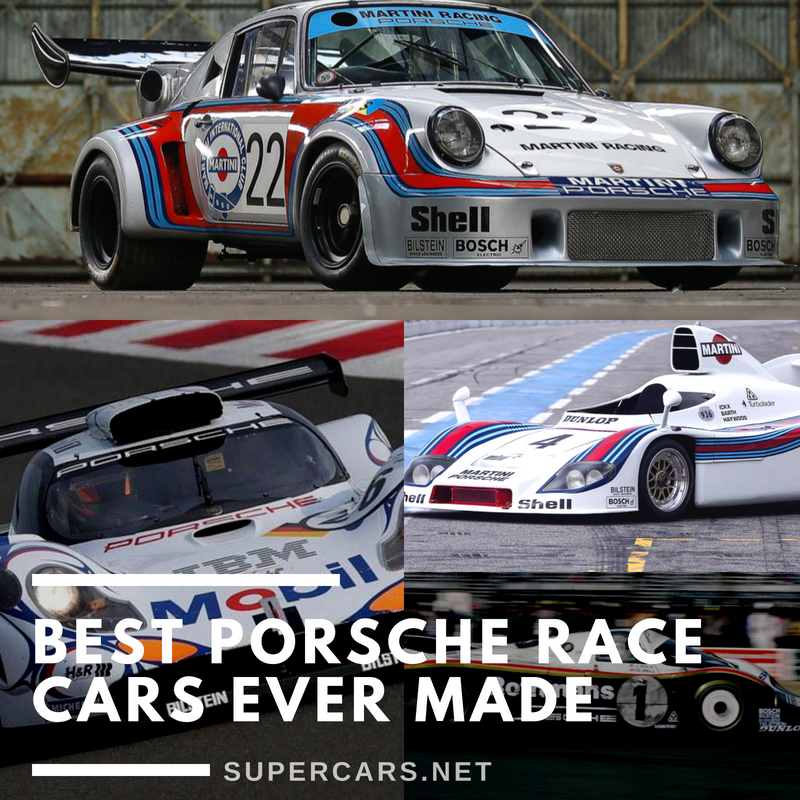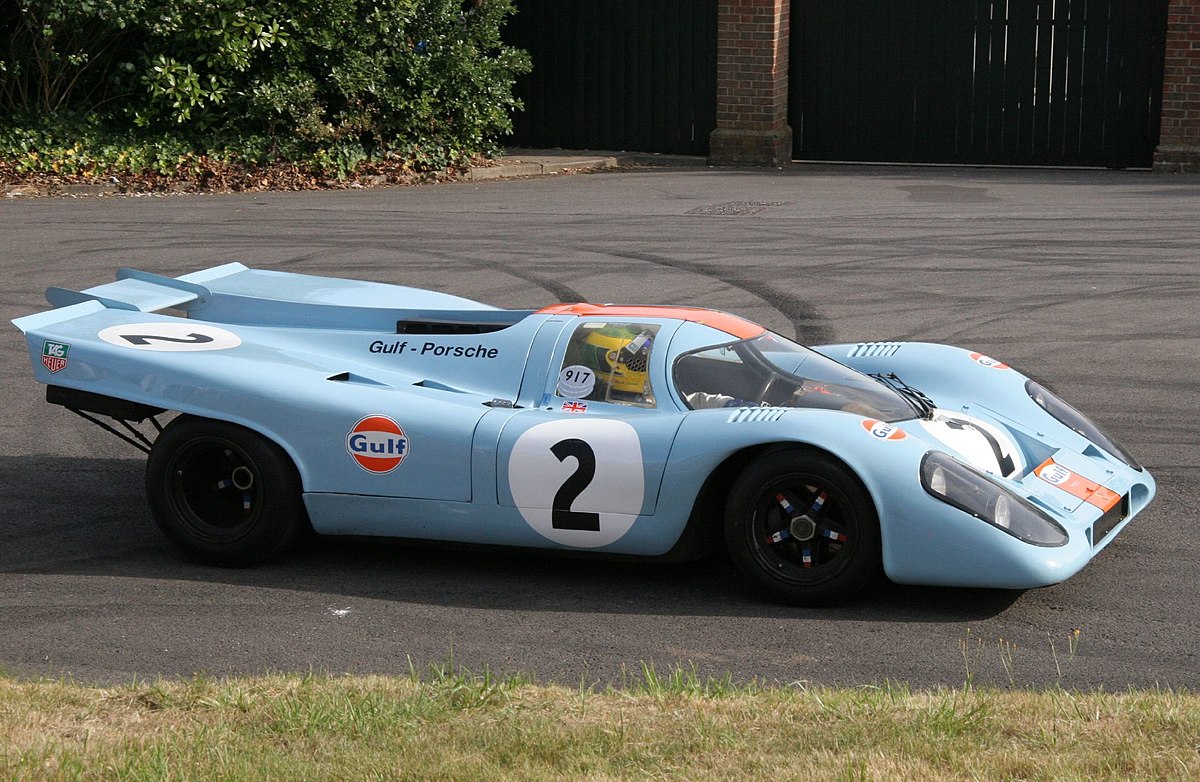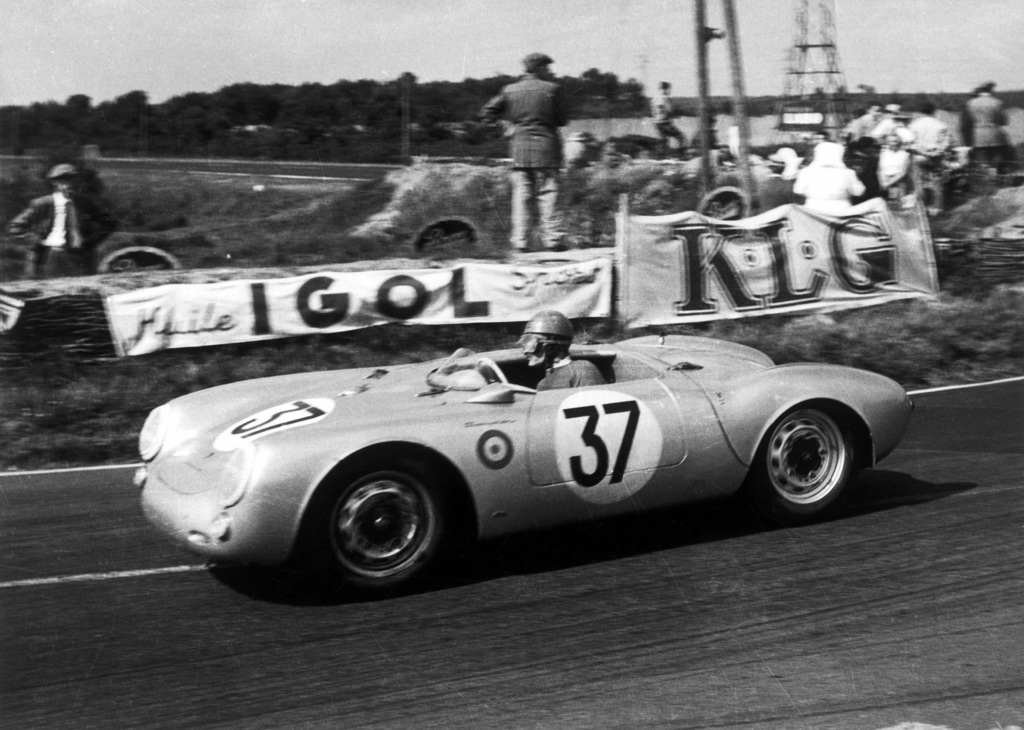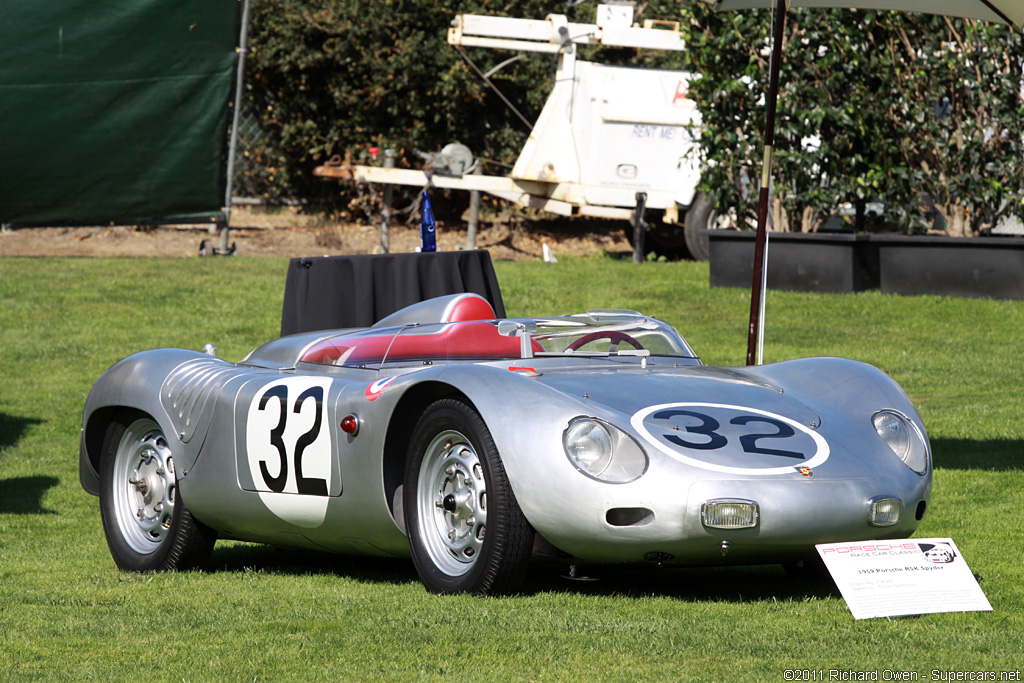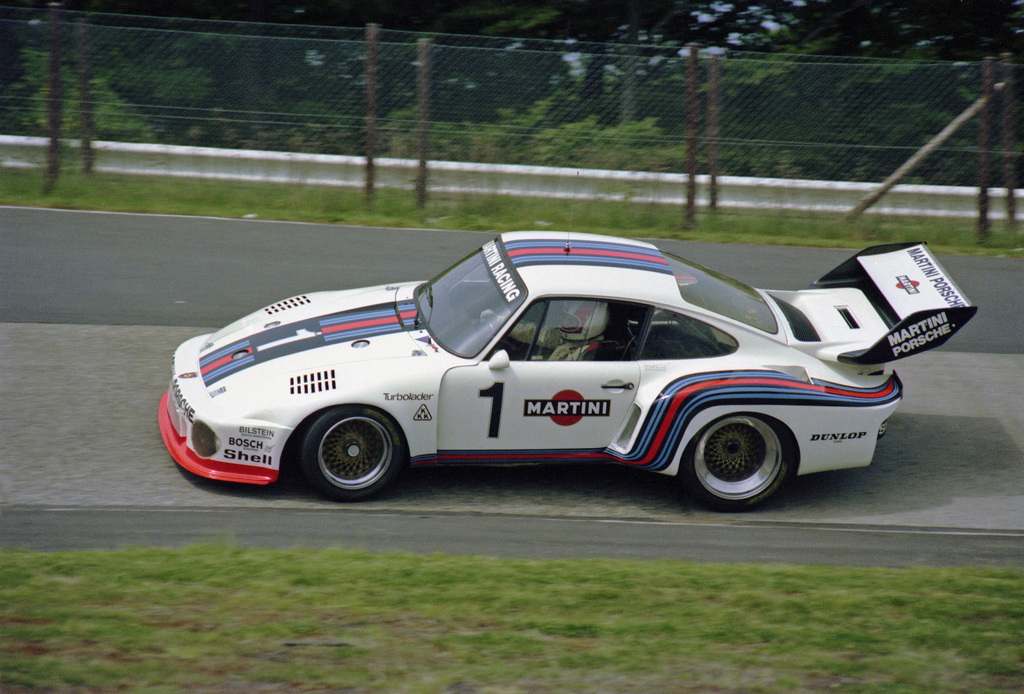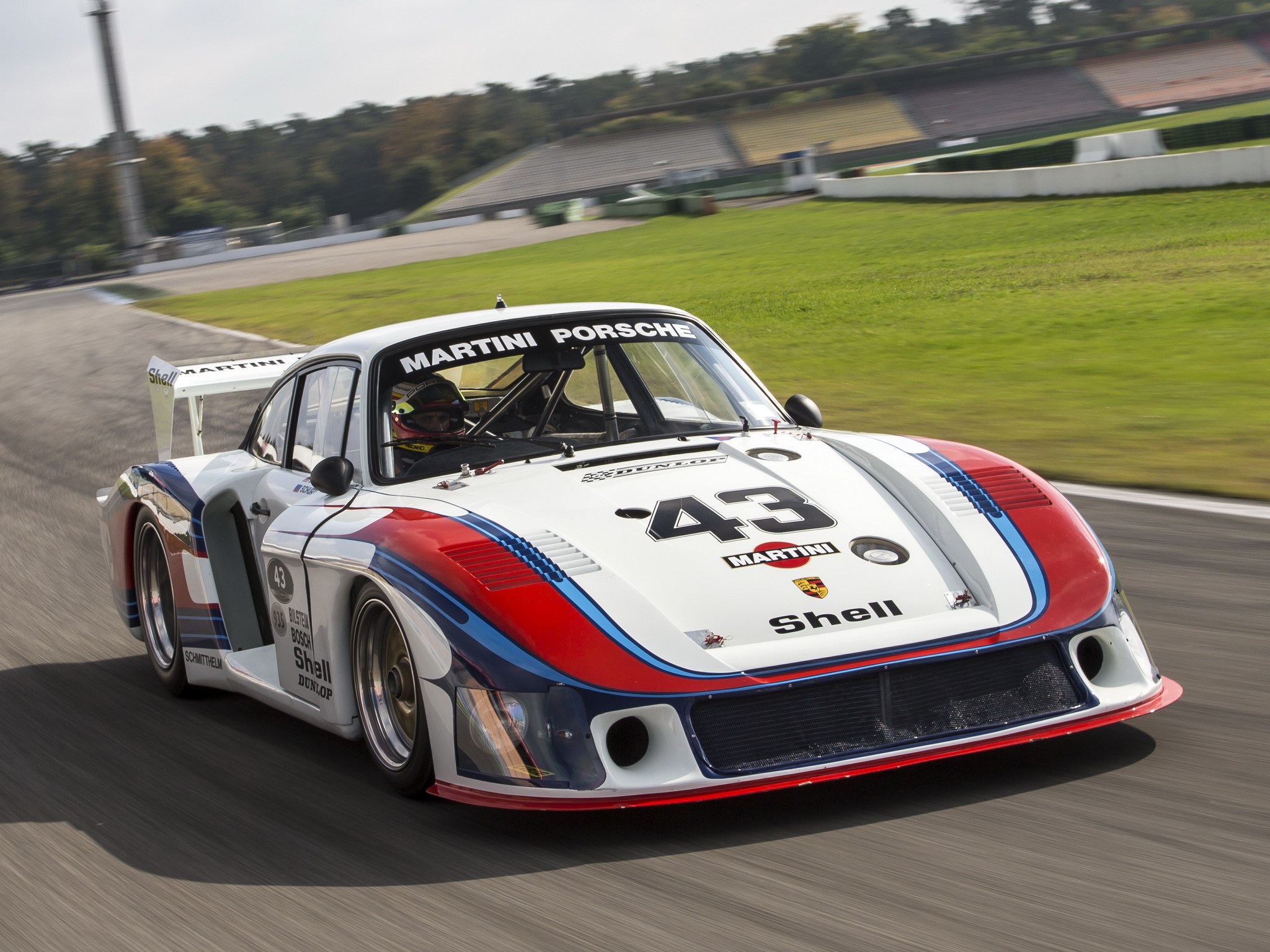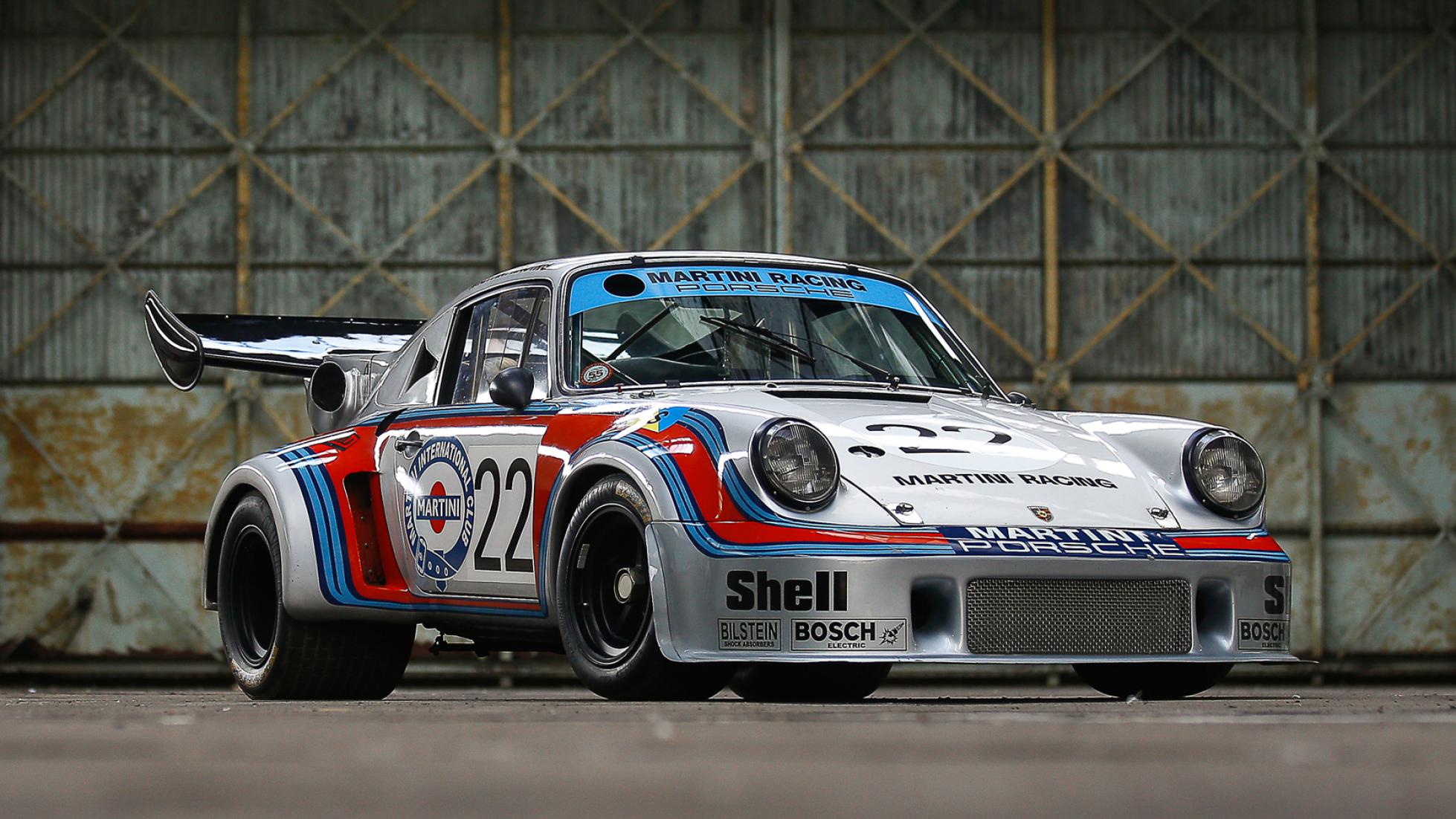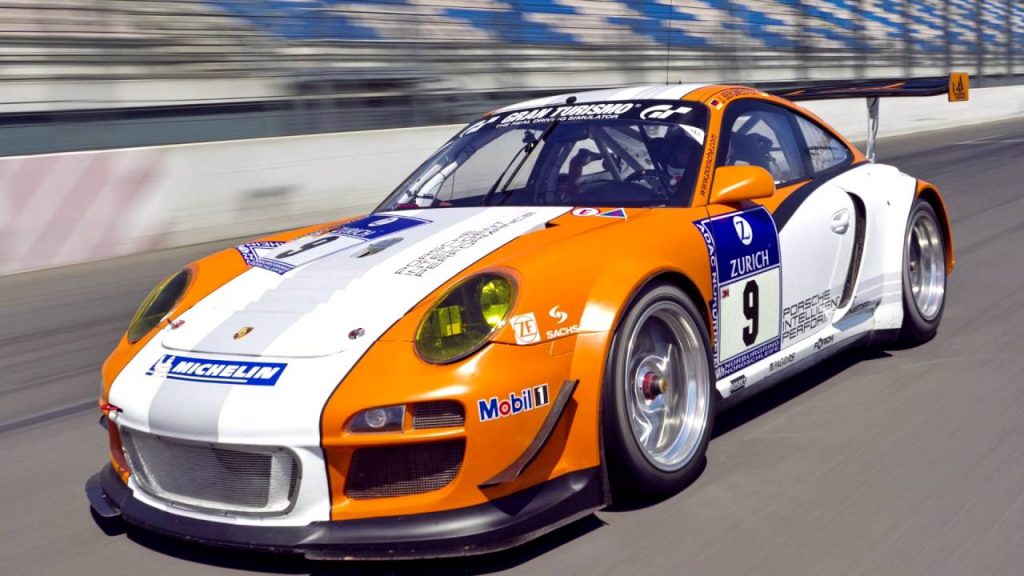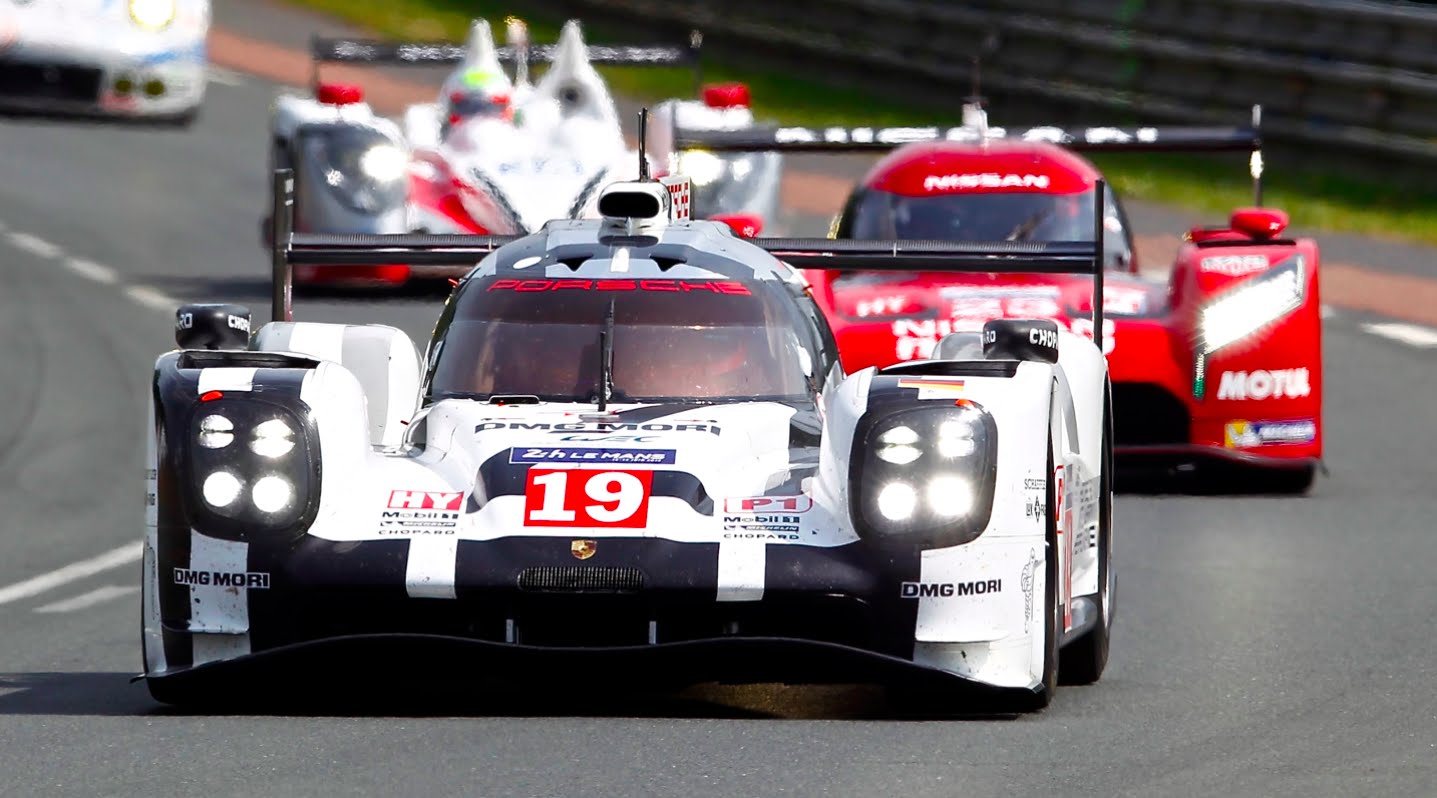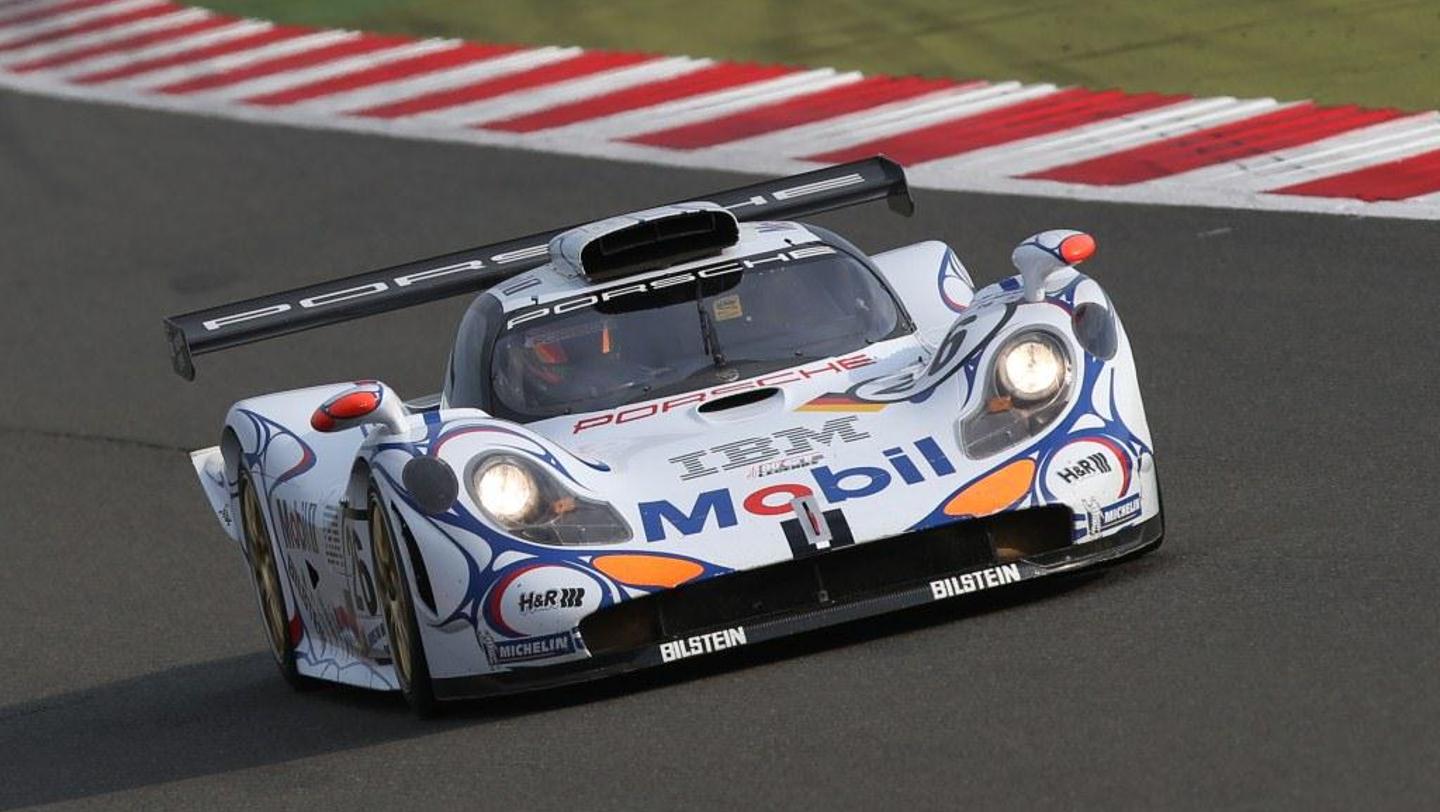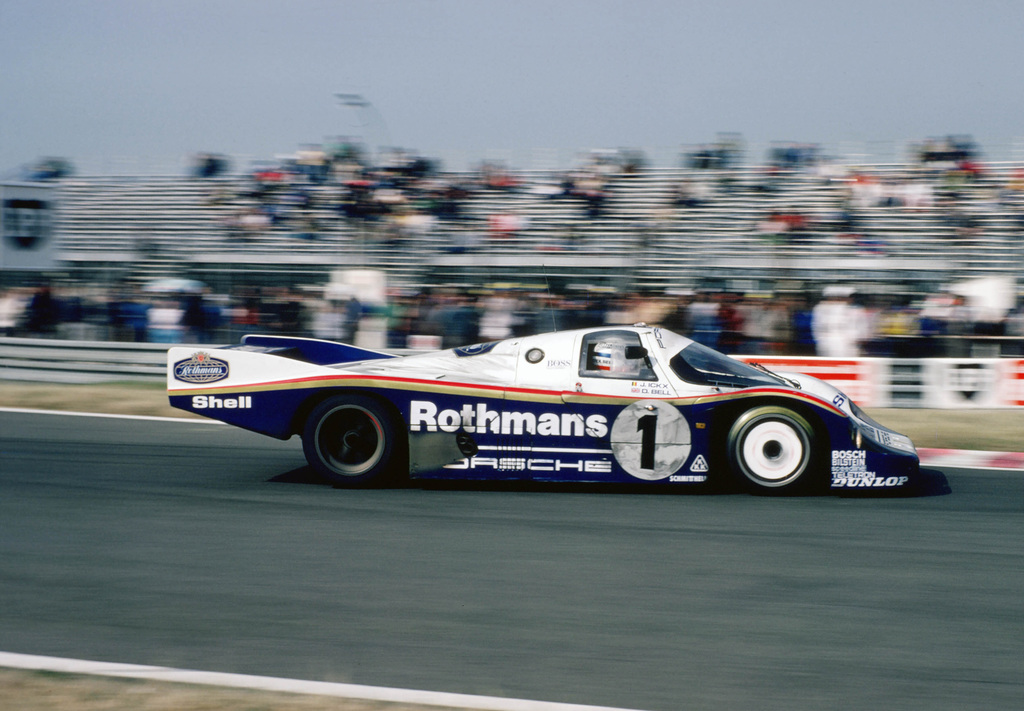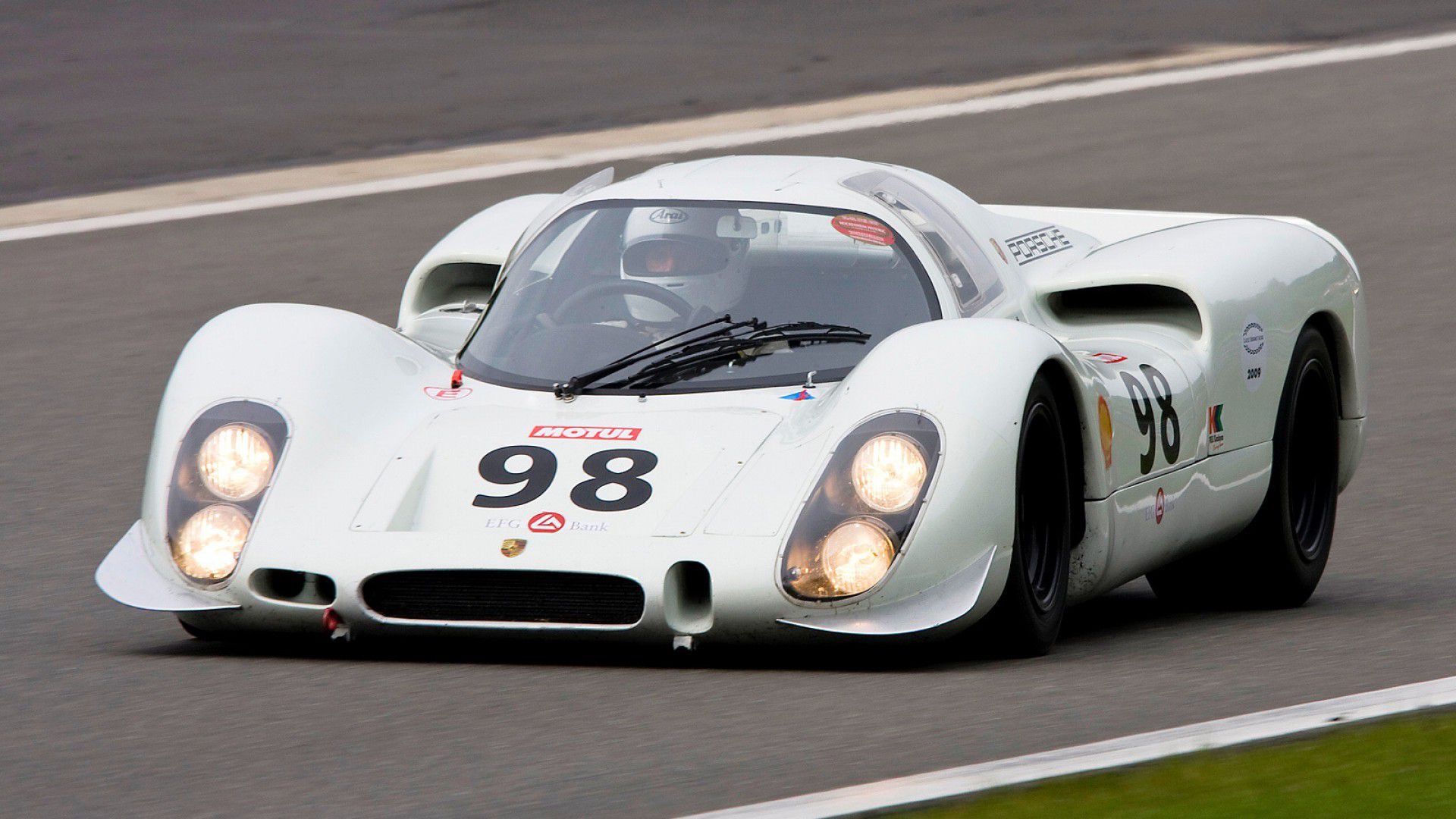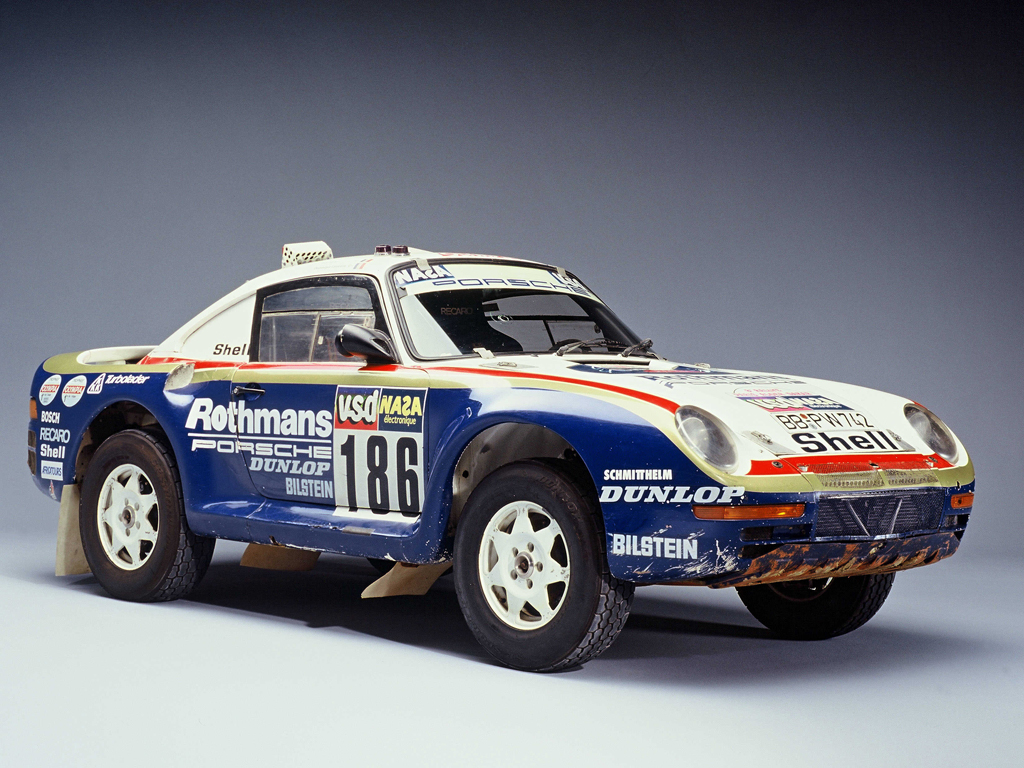Definitive List of the Best Racing Cars Porsche Has Ever Raced
Porsche Race Cars
Porsche 917
Porsche 550 Spyder
Porsche 718
Porsche 904
Porsche 935/77
Porsche 935/78 ‘Moby Dick’
Porsche 911 RSR 2.14 Turbo
Porsche 911 GT3 R Hybrid 2.0
Porsche 919 Hybrid
Porsche 911 GT1 98
Porsche 936 Spyder
Porsche 956 C
Porsche 908
Porsche 959 Rally
Clearly this is Porsche month for us. First we wrote about all the wonderful 911s you can buy today, then we took on the best non-911 Porsche’s before tackling the hardest one, the greatest 911s in history. Now it is time for Porsche race cars and boy was this one tough. Lots of automakers like to brag about how their “racing heritage” informs their production vehicles, but nobody does it like Porsche. Their history in motorsports is unequaled and the machines they have made have won thousands of races over the years. Porsche has had success in Formula 1, Le Mans, Daytona, Nurburgring, GT Racing, Rally and much more.
Porsche started racing with lightweight versions the 356 but things really took off with the “giant killer” 550 Spyder. Dedicated race cars like the 550, 718, RS, and RSK models were the focus of Porsche’s race program through the mid-1960s.
Porsche first expanded its 8 cylinder flat engine to 2.2 liters in the 907, then developed the 908 with full three liters in 1968. Based on this 8 cylinder flat engine the 4.5 liter flat 12 917 was introduced in 1969. The Porsche 917 is considered one of the most iconic racing cars of all time and gave Porsche their first 24 Hours of Le Mans win. The 917 went on to destroy the competition in the cutthroat Can-Am racing series.
Porsche has had success with 911 racing variants since the beginning of that models history, winning the Monte Carlo rally. In the 1970s Porsche won the Targa Florio, Daytona and Sebring with the Porsche 911 Carrera RSR. The 911 also went on to win Le Mans in 1979 in the Porsche 935. Since then the 911 has campaigned both by Porsche and by privateers in thousands of motorsports series with great success. Even today, Porsche churns out specific racing models that enthusiastic buyers can snap up and drive in global races in addition to its formal race programs it competes in. Recent success in LMP1 with its Le Mans winning 919 Hybrid shows that Porsche can still mix it at the top.
In celebration of that history we pick the best racing cars Porsche has ever produced and tell you all about them. But first a primer on Porsche and racing.
A Primer – Porsche’s Start in Motorsports
Porsche has a long history and its illustrious racing and motorsport heritage is a big part of that story. You name the motorsports venue and series and there is a good chance Porsche has competed and and had success. 24 Hours of Le Mans, Rally racing, Formula 1, Indy, Carrera Cup (clearly) and much more.
It all started pretty early for Porsche. Because of his work with Lohner, Ferdinand Porsche was commissioned by Daimler to design a car that could be used to compete in the Prinz-Heinrich-Fahrt (the Prince Henry Trial.) While several designs were presented, Ferdinand’s model – the 22/80 PS – was selected to represent Austro-Daimler in the race. When the 22/80 PS finished in the top three spots of the Prinz-Heinrich endurance race event, the car was christened as the “Prince Henry”.
Then from 1925 to 1927 Porsche designed the 2-liter, 8-cylinder Mercedes Type S that won 21 of 27 races in the “Regenmeister.” The car was said to be almost unbeatable. This success led to Porsche being contracted to design a series of race cars (and the engines that powered them) that were to be driven in the Gran Prix of Germany. Known as “The Great Auto Union Project,” the development of the race car would keep the young Porsche engineering firm busy through most of the 1930’s.
In 1933, the governing body of the Grand Prix Circuit announced a new racing formula. Both Ferdinand and Ferry set to work on designs that would meet the new 750kg formula regulation. The early result of this effort was an experimental vehicle known as the P-Wagen project.
In 1946, Piero Dusio, an Italian soccer player, businessman and racing driver, approached the firm to design a new Grand Prix race car. Ferry recognized that this might be the opportunity he’d been seeking to free his father from prison. Dusio gave the Porsche firm just 16 months to complete the car. Dubbed the Porsche Type 360 Cisitalia, the Grand Prix racer featured a supercharged, mid-mounted, 1.5 liter flat-12 cylinder engine that produced 385bhp at 10,500rpm. It was paired to a complex four-wheel drive transmission assembly. It never advanced beyond the testing phase, due mostly to the limited timeframe in which the car was to be completed so that it could compete in the Grand Prix circuit. Despite this, the car was also the first ever to bear the “Porsche” name.
The rest as they say is history. Now, onto the cars.
Best Porsche Racing Cars
Porsche 917
Porsche first expanded its 8 cylinder flat engine to 2.2 liters in the 907, then developed the 908 with full three liters in 1968. Based on this 8 cylinder flat engine the 4.5 liter flat 12 917 was introduced in 1969. The Porsche 917 is considered one of the most iconic racing cars of all time and gave Porsche their first 24 Hours of Le Mans win. The 917 went on to destroy the competition in the cutthroat Can-Am racing series.
Few race cars have attained the same notoriety as the 917. It was dangerously quick and also reliable enough to win Porsche’s first overall victory at Le Mans in 1970. The feat was repeated in 1971 and the 917 has now become an icon of Porsche performance.
It’s true that Porsche took their most daring step forward with the 917, but it followed a long and progressive development of sports racing prototypes. Leading up to the 917, Porsche and Ferdinand Piëch had made very successful sports race cars limited to the smaller classes. These included the 904 Carrera GT, 906, 908, but they were often slower than the GT40 and Ferrari Prototypes which would take overall victory.
In April 1968, the CSI reduced the minimum required production for sports car homologation from 50 to 25 cars. This caught the attention of Piëch who considered a new sports prototype that could win Le Mans. The 908 fit well within the new 3.0 liter prototype class, but it was the 5-liter sports car class known as Group 4 which caught their attention. In it were the V8-powered Lola T70 and Ford GT40 MKI which were very capable of outright victories. Porsche decided the only way to win the World Sports Car Championship was to build 25 copies of a 5-liter prototype that would meet the minimum homologation requirements to qualify as a sports car.
Porsche started their long 917 race program in 1969 with a series of 25 identical cars that were upgraded throughout their career. The first major modification was a stability upgrade that came in 1970 with the 917 Kurzheck or short tail. Simultaneously a long tail ‘Langheck’ model was made for top speed down the Mulsanne Striaght.
After Porsche had won Le Mans twice with the iconic 917 Kurzheck, the engineers at Weissach started experimenting with Can-Am versions and this 917 16-Cylinder Prototype was one of their first test mules converted, turning it into a Group 7 contender that had over 1000 bhp by 1973. As a result the L&M Porsche+Audi 917/10 of George Follmer and Penske won the 1972 Can-Am Championship ahead of the typically dominant McLaren team.
For 1973, Valentin Schäffer had completed the 5.4-liter engine which produced considerably more power at 1100 bhp at 7800 rpm. Later, the 917/30 went on to dominate in the 1973 CanAm with the top four places in the final points being taken back to Stuttgart and Porsche factory driver, Mark Donohue, setting a closed circuit record of 222 mph (355.85km/h) around the Talladega Oval, Alabama. A time that still ranks as one of the fastest race laps ever.
This is definitely the most important race car in Porsche’s history.
More: Porsche 917, 1969 Porsche 917 story
Porsche 550 Spyder
From 1953 onwards, Porsche began to use a car specifically designed for motor racing, which was to have a long history of spectacular successes: the 550 Spyder. In technical terms, the mid-engine Roadster was distinguished by its lightweight yet rigid flat frame made from steel tubing and a streamlined and stylish monocoque body. The 550 Spyder won its very first race at the Nürburgring in 1953. Particularly in the “land of opportunity”, the lightweight Spyder was a great asset both on the road and on the track in the 50s. In 1954, it won its class at the Carrera Panamericana in Mexico.
The mid-engine sports car was later equipped with a space frame and received the A designation for even greater power and driving pleasure and became an out and out racing car. The new 550 A Spyder made its racing debut at the 1000-kilometre race at the Nürburgring. But the biggest success of all came in Italy where, at the Sicilian Targa Florio in 1956, Umberto Maglioli beat the Ferraris and Maseratis to the finish line. That was the first of 11 Porsche victories in what was probably the most demanding race of its time.
Porsche 718
Porsche started racing with lightweight versions the 356 but things really took off with the “giant killer” 550 Spyder. Dedicated race cars like the 550, 718, RS, and RSK models were the focus of Porsche’s race program through the mid-1960s .
We chose the 718 over the 550 Spyder due to its amazing results. Successor to the 550 Spyder the 718 was one of Porsche’s most successful race cars in the early years. With its flat-four motor the small and light 718 continued the “giant killer” reputation of the 550 Spyder. Unlike the heavy and powerful v12 Ferrari’s that the 718 raced, the Porsche was light, nimble and very rigid, easily allowing it to win its share.
The car was commonly referred to the RSK and came in a number of set ups in order to compete in different motorsports series. There was the RS60 with 160hp and updated suspension that ended winning the 12 Hours of Sebring and the Targa Florio. The RS61 was basically just an updated RS60. The W-RS upped engine size to 2 liters and went from the initial 4-cylinder to bigger flat-8 with power jumping to 240 hp. While the W-RS could only manage 8th at Le Mans it did win the European Hill Climb Championship. There were even three 718 cars entered into Formula 1 in 1961 (before Porsche switched to the 904 for F1 duties).
More: Porsche 718
Porsche 904
The 904 was a racing car built to satisfy the FIA’s definition of a GT car and started a trend which would motivate Porsche to manufacture sports prototype cars.
Expertise gained while racing and developing the 550 and RSK (718) Porsches laid the foundation for the 904. After two fledging years of Porsche Grand Prix racing they decided to abandon Grand Prix Racing in 1962 and focus on sports car racing and thus the 904. As the FIA demanded one hundred examples had to be produced to meet homologation, the 904 was designed as a customer car with a full interior including a heater.
Originally, the chassis of the 904 was designed to accept a number of engines and specifically the flat-6 from the upcoming 901 or 911 as we know it. It was the familiar mid-engine layout with the type 587/2 engine found in the Abarth Carrera being used. This was Porsche’s most famous engine at the time, featuring all-alloy construction, two spark plugs per cylinder and over-head cam shafts. They increased horsepower from 155 to 180 at 7200 rpm. Optionally, Porsche offered the type 771 eight-cylinder engine with the 904. It was again a two-liter engine, but offered 210 horsepower.
Since as many as one hundred and twenty 904s were sold to varying customers, the car competed in numerous hillclimbs, endurance races, sprints and rallies. The car would compete in the two-liter class against competition such as the Abarth Simca 2000 and Alfa Romeo Guila Tubolare Zagato.
As highlight to start of the 904’s race career it took outright victory at 1963 Targa Florio. During the 1964 season, Porsche was unchallenged in their class, winning the two liter manufacturer’s championship. For the 1965 season Porsche modified the 904 to include more horsepower, wider racing tires, larger brakes and lighter fiber glass. It is also worth mentioning that during the 1965 season a variety of engines were used in the car including the flat-eights and the flat-sixes. Again, Porsche took the class wins at the majority of the 1965 events.
More: Porsche 904
Porsche 935/77
From 1977 into the 1980s, Porsche 935s were the popular choice in Group 5, GTP, and GTX racing both in Europe and North America. Later versions were made by Kremer, Joest, Gaaco and Fabcar left little room for any challenge to Porsche dominance. The culmination of these efforts resulted in a first overall at the 1979 24 Hours of Le Mans. The 935 was initially offered as version of their 935 for private racing teams that raced alongside the technically superior Martini-sponsored factory cars. These were based of the 1976 the Porsche Carrera RSR 2.1 Turbo which contested the 24 Hours of Le Mans in 1974 provided a basis for the 935.
Due to the more relaxed Group 5 regulations, engineer Norbert Singer could drastically alter the outer-bodywork of the standard 930 unitary steel monocoque. This allowed for much larger fender flares and a huge rear wing. Half way through the 1976 season, Porsche relocated the front headlights to the Flachbau or flatnose design.
The design retained the 930 Turbo bodyshell which was stiffened by an aluminum roll cage. The attached front and rear sections were made from fiber-glass and 5-inch wheel arches were fitted covering 15-inch tires in the rear. Plexiglass windows and other lightweight construction meant that the car was produced 90 kg underweight which was offset by ballast.
Using the 1.4 equivalency factor given to turbocharged engines, Porsche could assemble a 2.9-liter engine that fit well within the 4-litre restriction. To offset the smaller displacement, a huge KKK turbocharger was fitted which helped the 2808cc flat-6 produce close to 600 bhp. This number varied depending on the boost which ranged from 1.35 and 1.55 bar.
The engine used dual-ignition, a 908-style fuel pump, plunger-type fuel injection and spraybar lubrication. Consumption was rated at 4.38 mpg.1 A knob on the dashboard controlled the boost which could vary the power from a reliable 550 bhp to 650 bhp in sprint mode. Some private teams opted for the larger 2994cc engine which raised power to 630 bhp but they were forced to carry 122 extra lbs of ballast.
The suspension and wheels were also drastically upgraded including coil springs, adjustable anti-roll bars, and larger ventilated discs. Naturally, the car was completely stripped and Porsche managed to reduce weight to 900 kg. With ballast the car could then meet the required 970 kg formula.
Porsche offered the car again in 1978 (see below) with the twin-turbocharged specification and running boards as on the factory team cars. That year IMSA champion was Peter Gregg driving the Brumos Racing 935. The World Championship of Makes was secured by the 935 after winning 7 rounds. The German Nation Championship was also contested by 12 separate 935s of which the Gelo-entered cars were fastest.
More: Porsche 935
Porsche 935/78 ‘Moby Dick’
Due to its wide long-tail body, the Porsche 935/78 was also known as Moby Dick. It was the most powerful 911 ever. The culmination of the 935 development story was the 935/78 of 1978. The 935/78 was the ultimate expression of the 911 factory race car before Porsche officially withdrew from motor sport. Raced under the Group 5 silhouette series, great liberties were taken with the design.
The 935/78 was built under Porsche’s Chief Racing by Norbert Singer for high speeds at Le Mans. Due to the advanced shape of the car 227 mph or 366 km/h was possible. To achieve this, both the front and rear end were redesigned with detachable panels that could reveal what little was left of the production unitary steel monocoque with new aluminum sub-frames. The design even went as far as replacing floor and lowering the car 75 mm.
The engine had to use production car internals, but the cylinder-heads were open for modification. For the first time in the history of the 911 the engine came with water-cooled cylinder heads featuring four valves per cylinder. Maximum output of the turbocharged 3.2-litre six-cylinder with four overhead camshafts was 845 bhp at 1.7 bar of boost. At the standard 1.5 bar, 750 bhp was possible.
The rear end of the car was completely new. Radiators that cooled the cylinder heads were mounted just ahead of the rear wheels and a massive adjustable rear wing was fitted above the engine. With a firm eye on Le Mans, Porsche sat out most rounds of the Championship except the Silverstone 6 Hours. There, Jochen Mass and Jackie Ickx won outright with a large margin over the nearest competition.
At Le Mans, only a single car was entered for the 24-hour race. It set the fastest lap among several specially-built prototypes. Rolf Stommelen and Manfred Schurti did the best they could despite engine troubles and brought the car home to eight overall. Porsche used the car only twice more before retiring it as a permanent fixture in their Museum. In later years Reinhold Joest and Kremer each made their own versions of the Moby using the factory blueprints.
More: Porsche 935/78 ‘Moby Dick’
Porsche 911 RSR 2.14 Turbo
The RSR was a milestone moment for Porsche. It was the first turbocharged racing 911, one that took part in the FIA’s Group 5 category for the 1974 World Championship for Makes and came 2nd overall at the 24 Hours of Le Mans. Just look at this thing and it is clear that Porsche was nuts (which we totally love).
While Porsche had success early on with small and powerful engines, is was really the RSR that showed just how successful a small-capacity turbocharged engine could be in a standard race car. The 917/30’s success drove Porsche to turbocharge more stuff and Porsche had decided to launch the new 911 Turbo in 1975/ Porsche wanted to prove the abilities of a turbocharged 911 in competition. To do so, they created the Porsche 911 Carrera RSR Turbo 2.1. Thanks to the FIAs requirements for a smaller than 3 liter engine for Group 5 cars, Porsche decided on a 2.14 liter flat-six and then added to monster KKK turbochargers to it.
Thats not all either, because this motor had magnesium crankcase, polished-titanium connecting rods, large-capacity oil pumps, a twin-plug ignition, Bosch mechanical fuel injection, and sodium-cooled intake valves (space aged stuff at the time). The result was 500 hp at 7,600 rpm and 405 lb-ft of torque at 5,400 rpm (in 1974). The RSR would wear fiberglass fenders, doors, front and rear valances, and front and rear decklids — all engineered for weight-savings — and tubular framing supported the engine and suspension.
Porsche extensively tested the car at the Le Mans trails and found it was 11 seconds faster than a 3.0 RSR. Four cars were made for the 1974 season and they debuted at the Monza 1000km.
Only four RSR Turbos were ever built (“R5,” “R9,” “R12,” and “R13″) and they all wore the now famous Martini livery. Unfortunately, the 2.14s had to race in the prototype class along with the Matra-Simca MS670C, Gulf Mirage GR7 and Alfa Romeo 33TT12. Despite the tough company, the Martini & Rossi-livered cars managed second place finishes at the Watkins Glen 6 Hours and the 24 Hours of Le Mans.
More: Porsche RSR Models, 1974 Porsche 911 Carrera Turbo 2.14
Porsche 911 GT3 R Hybrid 2.0
This hybrid race car is no Prius. Porsche decided to work with the Williams F1 Team to develop hybrid tech that it could use to go racing. They essentially took the F1 kinetic energy recovery system (KERS) (but used kinetic energy stored in a flywheel rather than batteries) to create the epic GT3-R with its two electric motors assist.
The electric motors added 218 hp to the front wheels to supplement the 470 hp four-liter flat-six engine at the rear. The 911 GT3 R Hybrid was a game changer and that was clear when racing bodies at the time didn’t know how to classify the car.
Compared to its predecessor the second-generation hybrid is our pick. It was 20 percent lighter and more efficient. The GT3 R Hybrid 2.0 features a monocoque body of hot-galvanized steel with a welded roll cage. Body panels are carbon fiber and there are lightweight polycarbonate windows on all sides, including the front windshield. At each corner is a height-adjustable suspension with dual coil springs and Sachs gas-pressure fixed-position dampers. The steering rack is power-assisted, with an electro-hydraulic pressure feed.
With a curb weight of just 2,866 pounds and a total system power of 672 horsepower, the all-wheel-drive Porsche GT3 R Hybrid 2.0 will accelerate to 60 mph in about 2.5 seconds. Its top speed is gearing limited to about 175 mph but that doesn’t seem to be an issue when racing. In September 2011 it impressed everybody when it competed in an exhibition class during an American Le Mans Series (ALMS) race at Laguna Seca. Starting last it outran the entire GT class.
Porsche 919 Hybrid
Porsche had not tasted overall victory at Le Mans since the Porsche 911 GT1 in 1998. This is probably due to the fact that Porsche was spending its time toiling away with GT cars and specifically the GT3 and the LMP2 RS Spyder. Porsche tasted victory and won major races overall during the period. In 2014 that all changed when Porsche returned to the top-tier LMP1 class. It wanted outright Le Mans victory. .
This was an advanced and unique race car. The 919 has a 2-liter turbocharged four cylinder gasoline engine with direct injection and two energy recuperation systems and a battery-based hybrid system.
The car made its competitive debut at the 2014 6 Hours of Silverstone, finishing third behind Toyota. At Le Mans that same year a series of unfortunate issues meant Porsche had to go back to the drawing board.
Enter the 2015 season and the car was 90% different according to Porsche. The 919 achieved pole positions in Spa and Silverstone before finally picking up a pole at Le Mans. and win at the 24 Hours of Le Mans. After Le Mans it won the five remaining races of the season.
Porsche won the 24 Hours of Le Mans that year (2015) and continued to dominated the LMP1 category until retiring the car in 2017. The Porsche LMP1 program won the 2015 FIA World Endurance Championship, won the 2016 Le Mans race and capped off the streak with overall victory in 2017 too.
More: Porsche 919 Hybrid
Porsche 911 GT1 98
If we are talking about Le Mans legends surely we need to include the Porsche 911 GT1 on our list of awesome Porsche race cars. With its carbon monocoque chassis, extreme aerodynamics and mid-engined layout, the Porsche 911 GT1-98 won Le Mans (Porsches 16th overall victory) and cemented its place in history.
When the 911 GT1 was unveiled in 1996, Porsche exploited the rule book and rather than develop a race version of one of their road going models, what they created was effectively a purpose built sports-prototype. The production version of the GT1 was then created to homologate Porsche’s 911 GT1 contender. The street version was known as the ‘Strassenversion’ and is considered the most fierce and rarest 911 ever.
The high-tech GT1 made its debut at the 1996 Le Mans and was a technical masterpiece. Both new Porsche 911 GT1s showed reliability and speed, achieving second and third place. For the 1998 season Porsche developed an all-new car, the 911 GT1-98. Its aim was to match the new Toyota GT-One and Mercedes-Benz CLK-GTR. Unlike the previous two models, the 98 version had a more traditional sports-prototype look about it. The GT1 from 1998, weighing only 950 kg, was the first Porsche racing car to feature a carbon-fibre monocoque chassis. The 3.2-litre engine with dual KKK turbochargers produced 550 hp at 7,200 rpm. The power is transmitted to the rear wheels via a sequential 6-speed transmission.
At Le Mans in 1998 troubles with the other top runners from Toyota, BMW and Mercedes meant that while slower, the 911 GT1-98 did enough to take both first and second place overall. This gave Porsche its record-breaking 16th overall win at Le Mans, more than any other manufacturer in history.
More: Porsche 911 GT1 (race cars), Porsche 911 GT1 (production)
Porsche 936 Spyder
In 1976 Porsche decided to participate in the World Sportscar Championship (Group 6) and developed the 936 Spyder as a result. In record time the race engineers developed a new race car in the Type 936 which was to start alongside the 935 production race car.
Technically, the development of the open Spyder car took its orientation from the proven 908/03 and 917/10 designs. The result was an aluminum tubular frame covered by an aerodynamic plastic body. The car was powered by the 2.1-liter flat-six bi-turbo engine from the 911 Turbo RSR with an output of 540 hp (397 kW). A typical feature of the two-seater turbo racing car was the large air intake above the cockpit and the high tail fins.
The Porsche 936 Spyder was a success. The first race-worthy Porsche 936, called the ‘black widow’ within Porsche because of its matte black body, conducted tests in the second half of February on the southern French race course in Le Castellet. After 4 of the 7 races in total, the Sports Car World Championship had already been decided in favor of Porsche. The 936 Spyder won all its races against the works Renault Alpine.
Participation in the Le Mans 24 Hours was rewarded in June 1976 with a convincing overall victory to Jacky Ickx and Gijs van Lennep. In 1977, Porsche returned to Le Mans with the 936/77. Its body was smaller, lower, shorter and further refined aerodynamically. The engine now featured two turbochargers and delivered 20 more horsepower. At one of the most dramatic races in history, Jacky Ickx, Jürgen Barth and Hurley Haywood slayed the armada of four Renault works cars and two factory-supported “Mirage” with Renault motors. In the year 1981, the 936 celebrated a sensational comeback with another overall Le Mans victory.
More: Porsche 936
Porsche 956 C
The 956 (and 962 that followed) were arguably the most dominant Porsche endurance racing cars ever. Introduced to comply with the FIA World Sportscar Championship’s new Group C regulations in 1982, the 956 was brutally fast and horrifyingly dangerous. Group C was a technical battleground involving the lowest possible road resistance, the most fuel-efficient engines and extreme power transmission. The 956 was the first Porsche racing car with a monocoque chassis and the so-called ground effect. The effect means that when racing, the cars practically stick to the asphalt. The engineers channel the air flows to generate a vacuum to create a downforce beneath the car.
The 1982 at Le Mans the Type 956 took the top three places. The lack of any real competition in 1982 practically handed them the championship, but due to their tremendous team, and the newly developed Weissach facility, Porsche turned the 956 into a customer prototype that would rule motorsport for a decade. Victories in every race of the World Endurance Championship as well as the win in the Manufacturers’ World Championship in 1983, 1984, and 1985 underscore the dominance of the 956. Add the 962 to the mix and between 1982 and 1987, the Porsche 956 and 962 won Le Mans six times.
The 956 was meant to replace the all dominant Porsche 935 and 936. When designing the prototype, Porsche decided to use the flat-6 which had proven itself, powering the 936 to victory at Le Mans. Around this engine Porsche focused on building a car that was above all, aerodynamically efficient, and to do that ground effects were employed. The secret to the race car’s success lay in this perfect interaction of the aluminum monocoque, the efficient turbo engine, and revolutionary aerodynamics, which put the 956 in a class of its own for several years running. It was the first Porsche race car with an aluminum monocoque chassis and ground effects. On a related note: the 956 saw the first appearance of the Porsche Doppelkupplung (PDK).
To tackle the FIA’s fuel restrictions, Porsche decided to rely on turbocharging which offered superior power output that could be adjusted to control fuel consumption by means of a waste-gate. This meant that at any given time, the fuel consumption could be adjusted, with corresponding power outputs from 580 bhp @ 17psi boost to 620 bhp at 14psi boost. Typically, drivers would lower the waste-gate level after they had run on maximum boost to gain top positions in the race
In addition to factory team cars, Porsche built additional 962C cars for privateers to campaign. The wins continued to pile up: victories in all races at the World Endurance Championship and at Le Mans, the Constructor’s World Championship for Porsche in 1983, 1984 and 1985, victories and championship titles in German and Japanese championships underscored the class and dominance of this racing vehicle. In design terms, the 956 represented a milestone for Porsche racing development and set new records in sporting competition.
Anticipating the FISA (Fédération Internationale du Sport Automobile) regulations due to come into effect in 1987, Porsche began developing the 956 into the 962 starting in 1984.
More: Porsche 962, Porsche 956
Porsche 908
In the late sixties, Ferdinand Piëch wanted Porsche at the top of motor sports and the 908 was his answer. In facing the best that both Ferrari and Ford could produce, it sparked a new generation of Porche prototypes that led to their most successful era. For the first time, Porsche completed in all the championship races with hopes of overall victory. This new era began when the 908 Coupés supported the much smaller 907 mid way through the 1968 championship season.
The 908 was the first car built for the CSI’s prototype Group 6 class that limited engine capacity to 3 liters. In 1968 the only competition came from the JW Engineering Ford GT40s which won Le Mans and the championship. The 908 prototype was named after its eight-cylinder, flat-6 engine. Driven by some of the best drivers, the 908 had a successful career in 1968/69 that included wins at the SPA-Franchorchamps 1000km two years in a row. Under continual development, the design was modified and raced as the 908/2 and 908/3 Spyder for tighter tracks.
Porsche achieved its first overall victory at the 24 Hours of Daytona with the Type 908 LH. The grand successes of the previous year at the 1,000-kilometre race on the Nürburgring and the Targa Florio are repeated. The 911T wins the Monte Carlo Rally.
At the end of 1967, when the displacement limit for prototypes in the Constructor’s World Championship was reduced to 3 litres of displacement (homologated Sports Cars were allowed 5 litres), the 908, with its new 350-hp eight-cylinder engine, could be raced in the long or short-tail version depending on track and competition.
More: Porsche 908
Porsche 959 Rally
The technologically pioneering Porsche 959 was presented at the IAA in 1985. Only a limited production run of 292 units of this high-performance sports car, based on the 911, were built. With a biturbo flat engine with water-cooled 4-valve cylinder heads, an electronically controlled chassis and all-wheel drive system, as well as an aerodynamically optimised body, Porsche showed what was possible in the field of automotive design.
As part of an extensive road testing programme, the 959 was taken to the desert. The motorsport department at Weissach built a version specifically designed for the Paris-Dakar rally in 1985. Porsche entered three 959s in the race. Power was transmitted to all four wheels via a 6-speed transmission and a pioneering, electro-hydraulically controlled centre differential. The 959 featured a 330-litre fuel tank. Like the 911 which won Paris-Dakar in 1984, a synthetic body made the vehicle considerably lighter; the 959 weighs 1,260 kg. First place in Dakar went to René Metge followed by Jacky Ickx – A double victory for Porsche. Kussmaul brought his 959 to the finish in West Africa in sixth position. On the journey through the Sahara, the Porsche vehicles reached speeds of up to 242 km/h.


